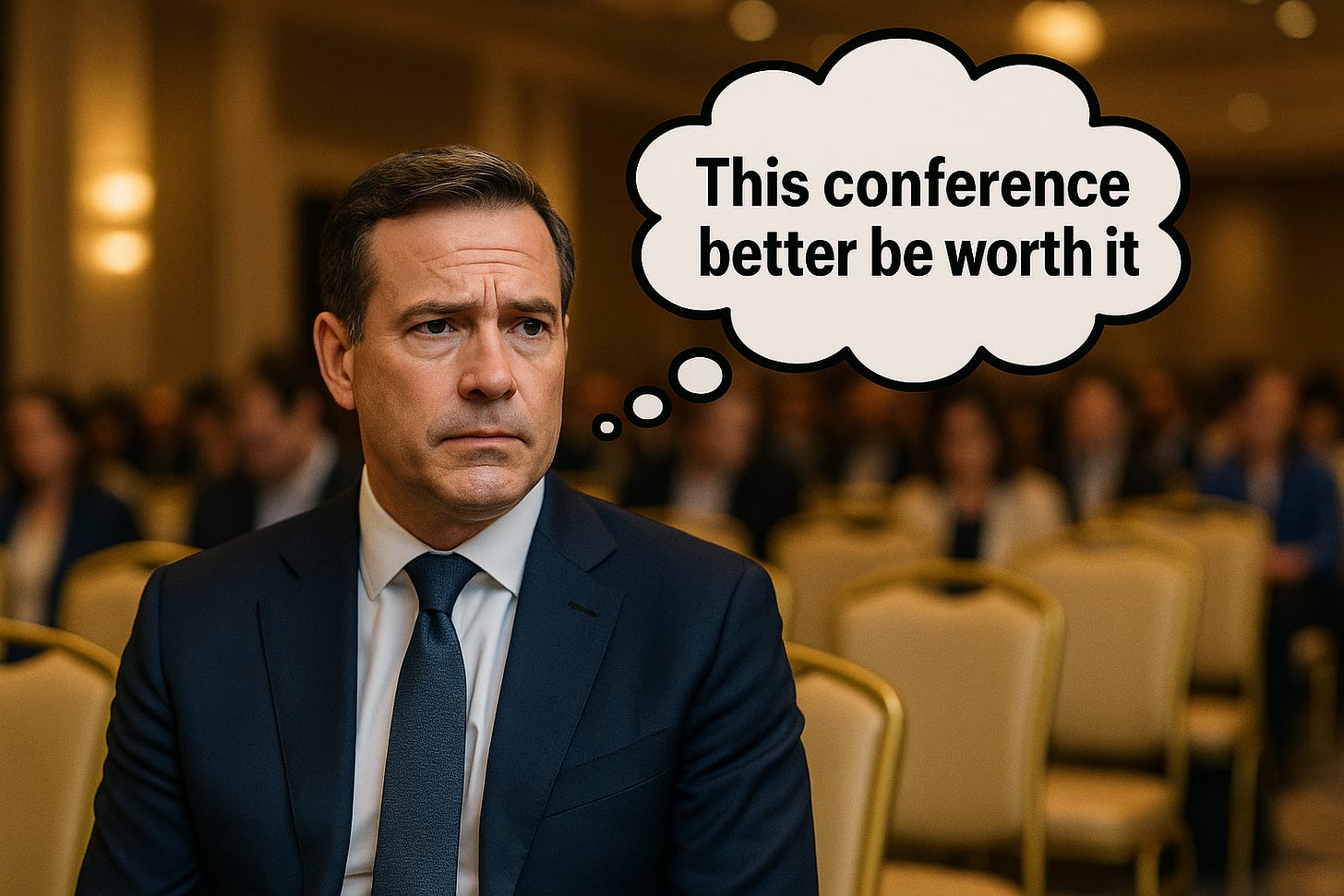The Price of Showing Up
For the executive, every trip is a five-figure gamble. For the planner, every banquet and ballroom is a budgetary minefield. Together, they face the same test: make the event worth the cost.
I’ve earned my miles. I’ve done my time in the middle seat, knees jammed, laptop tray trembling with turbulence, watching the pretzels run out in row 28. I’ve jogged through O’Hare at midnight, taken red-eyes to save a client a few bucks, and sat in ballrooms running on nothing but caffeine and willpower. Those were the dues.
Now, at this stage in my car…
Keep reading with a 7-day free trial
Subscribe to Gathering Point News to keep reading this post and get 7 days of free access to the full post archives.



